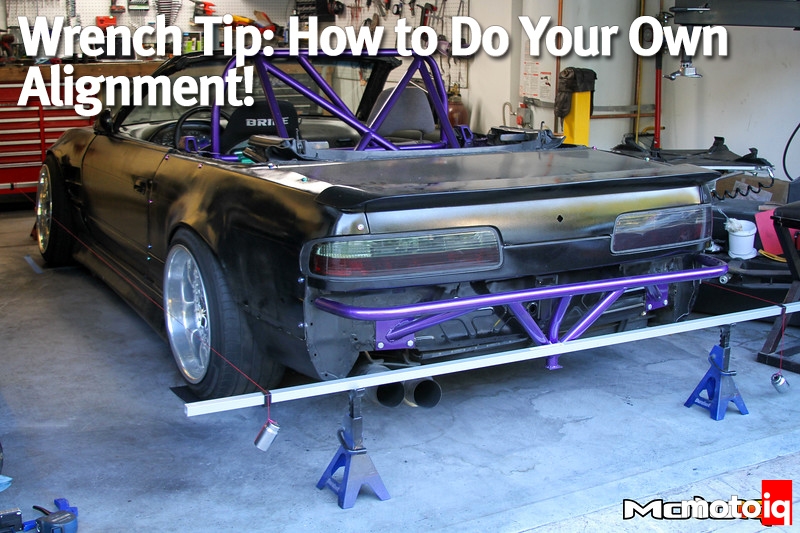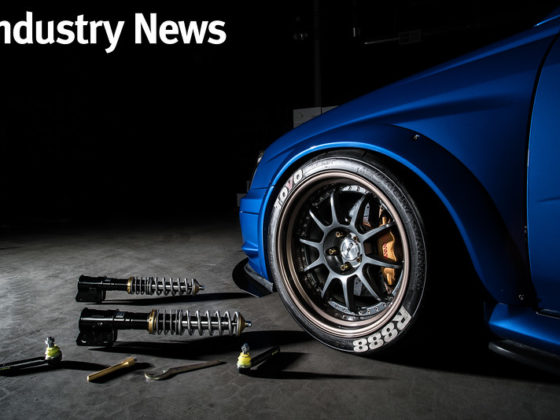Now let me introduce you to my $4 slip/turn plates.

The tiles serve two purposes. Firstly, they act as slip plates. They prevent your tires from grabbing onto the ground as you adjust the alignment settings so that you don’t experience binding when you make adjustments. This effect also ensures that your suspension settles fully when you drop the car off the jack. Secondly, they are used as turn plates when measuring caster. This is possible because the adhesive makes the tile stick to the tire, which means the tile will turn with the wheel.

The typical alignment order is caster->camber->toe. However, it’s not always that simple. For starters, you need a good toe reference to start off, or your caster and camber will be off. That means, if your toe is way off, you usually have to at least ballpark the toe before you can start doing the caster->camber->toe. If you know you already have a good alignment, and you just want to make tweaks, you can usually omit this step. Additionally, depending on your suspension setup, there are cases where camber adjustment can affect your caster, or toe can affect your camber, so you would have to go back and redo those settings.
But, let’s start with caster. Before you can measure caster, you have to know how to measure camber. Camber gauges can cost hundreds of dollars, but you can actually measure camber fairly accurately with just a level and a ruler. All you have to do is know the lip diameter, and some basic trigonometry.








11 comments
Thanks for the guide but I have a problem.
I entered your shortened caster formula in Microsoft Excel, and got a totally different value.
=ATAN((SIN(RADIANS(B64))-SIN(RADIANS(C64)))/(2*SIN(RADIANS(B65)))
=0.05481679
Instead of 4.2
ATAN in excel returns the result in radians by default. Convert it to degrees by changing your formula to =DEGREES(ATAN((SIN(RADIANS(B64))-SIN(RADIANS(C64)))/(2*SIN(RADIANS(B65))))
This worked, thank you.
Both of you guys are next level for this, thanks for the question and response!
Great article and a very clear explanation of the string method for alignment but one query. You stress the importance of the bars being parallel to each other but presumably they don’t actually have to be square to the car – making a parallelogram out of the string and the bars is sufficient and they don’t have to make a rectangle. Would you agree?
This is correct, a perfect rectangle isn’t necessary. An isosceles trapezoid or parallelogram is okay. In either case, the string is spaced evenly from the hub cap on each side.
Thanks!
Thank you for the great article and explanation, you’ve inspired me to give it a try!
Is this an empirical formula? If not, could you provide the source? I’d like to know how it was derived.
You do know the average driver don’t want to change tires every 25 miles
Do you know the tires won’t wear out in anything close to 25 miles even with the most extreme racing settings?